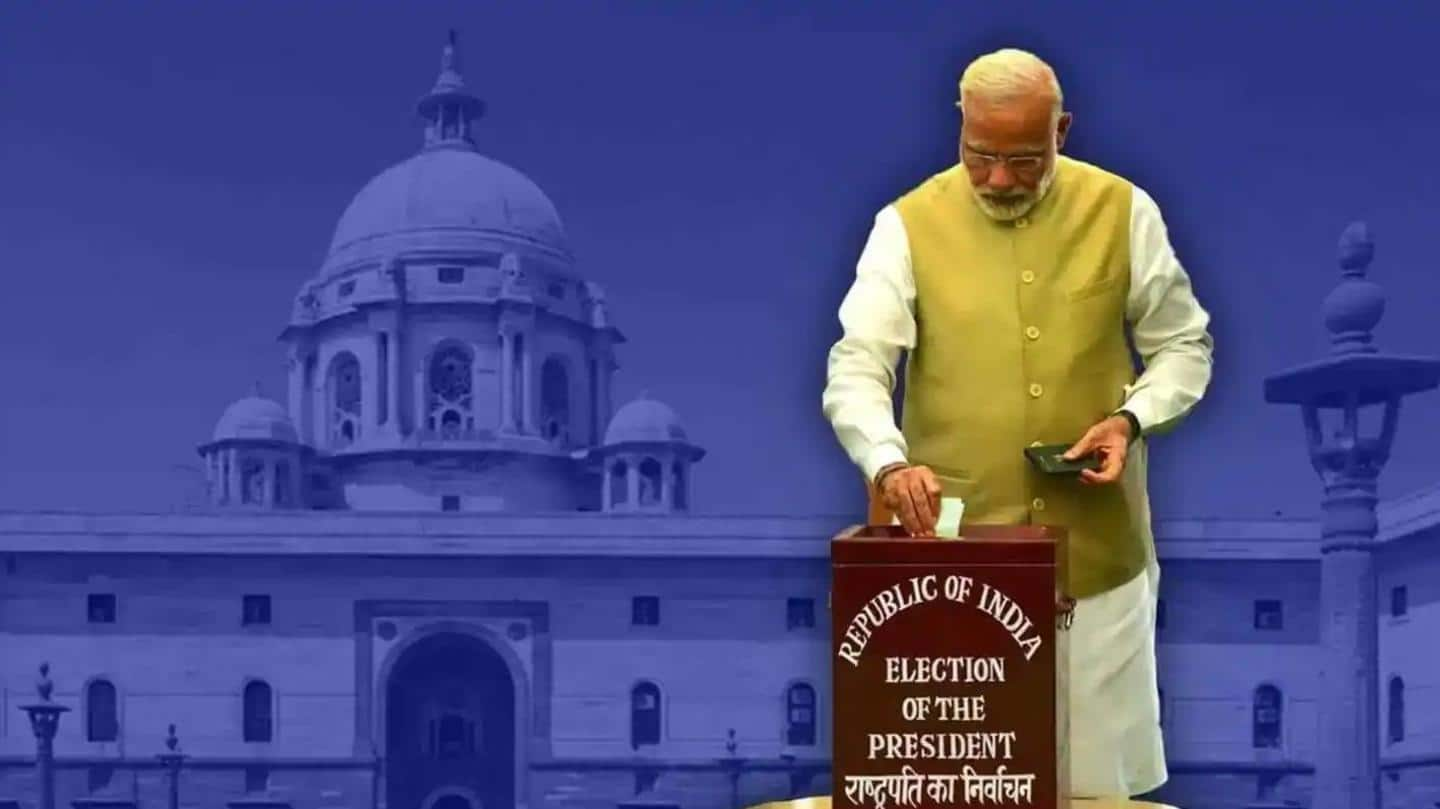
India's Presidential Election will take place on July 18
What's the story
The Election Commission of India (ECI) announced on Thursday that the election to elect the next President of India will take place on July 18. If required, the counting will take place on July 21. According to ECI, India's upcoming President will take the oath of office on July 25. The term of President Ram Nath Kovind expires on July 24.
Context
Why does this story matter?
The announcement by the ECI comes just a day before the June 10 Rajya Sabha elections for 57 seats across 15 states. With Jammu and Kashmir (J&K) under President's Rule as well as three other states—Rajasthan, Chhattisgarh, and Tamil Nadu—controlled by the opposition, the Rajya Sabha elections will be absolutely critical for the Presidential Election.
Context
Likelihood of an election against consensus is high
As per reports, it has been speculated that President Ram Nath Kovind won't get a second term in office, and the new candidate will likely be announced soon. So far, only the first president, Rajendra Prasad, has been elected twice. Although government sources previously stated that a consensus candidate would be preferred, the likelihood of a vote is high.
Information
The opposition may face difficulty in nominating a joint candidate
The opposition is likely to nominate a joint candidate, but reaching a consensus seems difficult, given the gradual shift in power structures caused by the Congress' deteriorating performance throughout most elections since 2014.
President of India
President Kovind won more than 65% of electoral college votes
President Kovind, a Dalit and former Governor of Bihar, was chosen by the Bharatiya Janata Party (BJP)-led government for the nation's highest office in 2017. The BJP's selection of Kovind splintered the opposition during the 2017 elections. Following the election, Kovind was elected as India's 14th President, defeating opposition candidate Meira Kumar, former Speaker of the Lok Sabha, with 65.65% of the total votes.
Information
What is NDA's position?
In 2017, when the National Democratic Alliance (NDA) was in power in 21 states, its candidate Ram Nath Kovind won with 65.65% votes of the electoral college. In 2022, however, only 18 states are either being governed by the BJP or its alliance partners.
Information
How is the position of NDA different today?
In 2017, the BJP was in power in Rajasthan and Chhattisgarh, and the ruling AIADMK's legislators in Tamil Nadu voted for Kovind. The Shiv Sena was also a part of the NDA. There was widespread cross-voting, with some Congress and other party MLAs supporting Kovind.
Electoral College
What is electoral college that elects President of India?
The president is elected by members of an electoral college comprising 776 elected MPs—from Lok Sabha and Rajya Sabha—and the 4,120 MLAs of the states and union territories of Delhi, Puducherry, and J&K. The value of an MLA's vote depends on the population of the state they represent. Currently, an MLA from Uttar Pradesh has the highest value, followed by Maharashtra and West Bengal.
Current status
Electoral college gives edge to Opposition over NDA
The current status of the electoral college for the Presidential Election gives the opposition a slight edge over the NDA. However, if the BJP keeps its votes intact and wins the support of regional and smaller parties, it can run past the hurdles and ensure a comfortable lead to get its candidate elected for the post of the President of India.